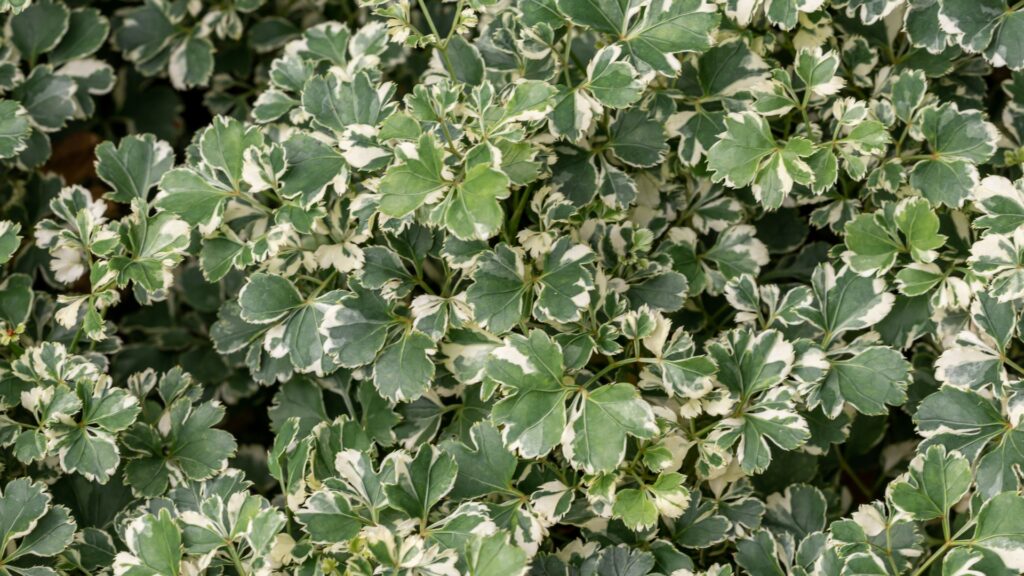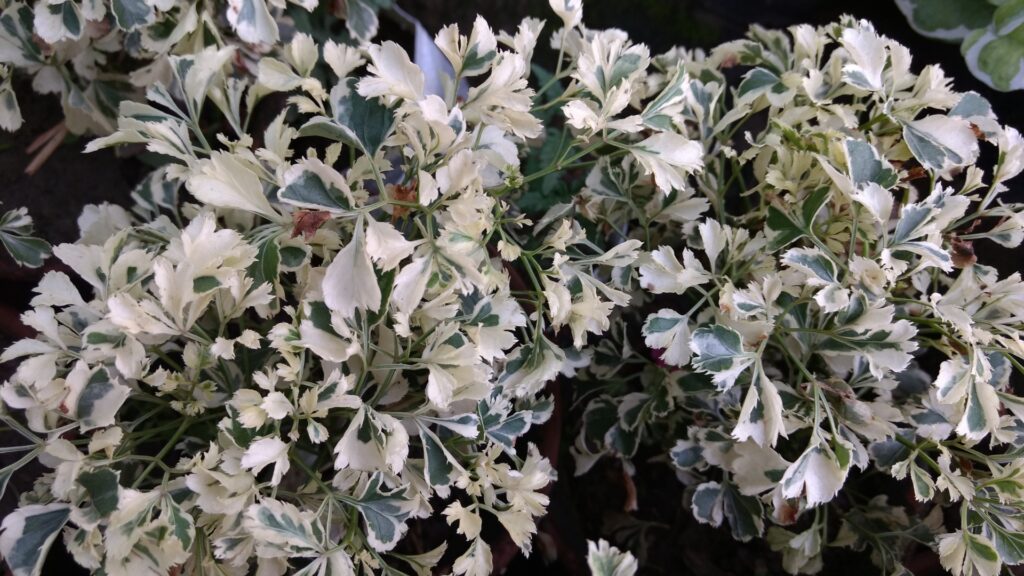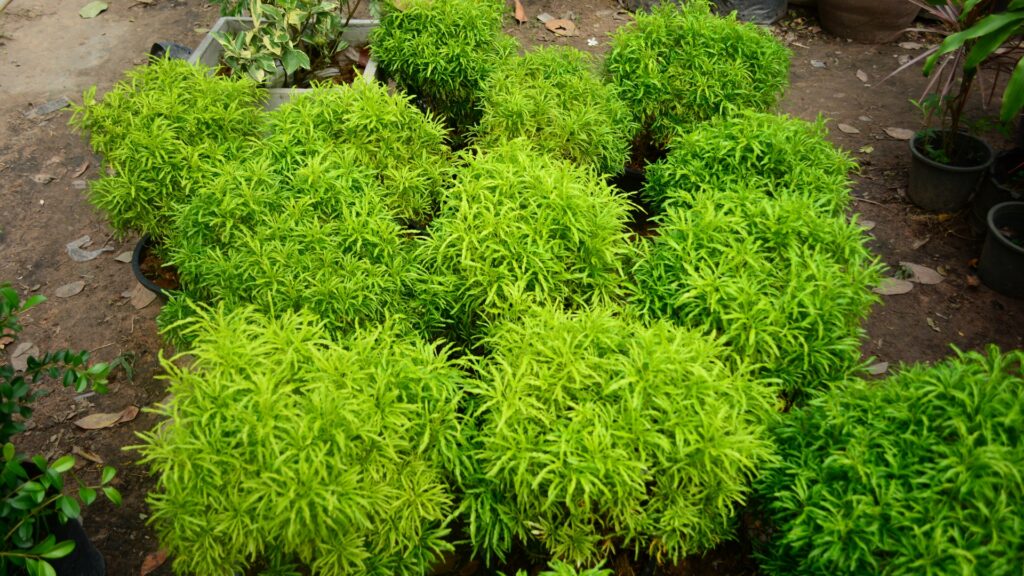The aralia plant has quickly grown in popularity over the years. Especially in Asia, plants in the Aralia genus are noted for their medicinal qualities, particularly for their anti-inflammatory and analgesic properties.
But aside from being medicinal plants, Aralia plants are also noted for their lovely aesthetics, which makes them great as houseplants.
As tropical plants, aralia plants thrive where it is hot and humid, so placing them where the temperature is at least 70°F is crucial for their survival. It also requires watering once a week, as well as medium to bright sunlight for six to eight hours every day.
To truly care for your aralia plant, you have to dig deeper. Fortunately, this article is all about the aralia plant – including tips and tricks on how to grow and take care of it successfully. You’ll also learn about the common problems with aralia plants and how to avoid them accordingly.
What Is Aralia Plant?

Otherwise known as spikenard, “aralia” refers to a genus of plants that is characterized by its cluster of doubly compound leaves that form at the tip of its stems.
They also have a cluster of white or green flowers with berry-like fruits, but these are often overshadowed by their thick foliage. That’s why aralias are known for their lush green appearance, which is truly head-turning.
The aralia genus is known to have a variety of around 68 species ranging in height from 20 inches to 66 feet tall. They also have a variety of leaf shapes – some long and slender while others are rounded and more flower-like. Some leaves even have bristles on the surface, while others are smooth.
- Scientific Name & Common Names: Aralia, Araliaceae, Spikenards
- Appearance: The aralia plant is generally a medium-sized plant that grows up to 20 inches tall. However, some aralia species that grow in the wild tend to grow up to 60 feet tall.
It is known for its thick foliage of bipinnate leaves that appear green with light green edges. Its flowers grow in a dome-like arrangement with white or green petals. It also bears berry-like leaves that appear dark purple in color.
- Origin: Asia, Americas
- Indoor or Outdoor plant: Aralia plants can either be indoor or outdoor plants. As long as it is planted in an environment that is conducive to its growth, the aralia will thrive wherever it is placed.
Aralia Plant Varieties
As earlier discussed, there are around 68 known species of the Aralia plant genus. Here are some of its more popular varieties.
- Ming Aralia. One of the most popular aralia varieties is the Ming Aralia. Otherwise known as Polyscias Fruticosa, the Ming Aralia is best known for its medium-sized frame and feathery foliage.
Unlike other aralias, it has small leaves that are distributed at the tip of each stem. This makes it quite an elegant decoration for your home or office. However, make sure to keep it out of reach of playful pets and children since its leaves can cause nausea and vomiting if ingested.
- California Spikenard. The California Spikenard is a lovely aralia shrub variety that can make any garden more appealing. Otherwise known as Aralia Californica, this plant is known to grow up to 10 feet tall. Aside from its thick and large foliage, it is also notable for its lovely flowers arranged in spherical growth. Without a doubt, it will make heads turn.
- Japanese Angelica Tree. Another popular aralia variety is the aralia elata or the Japanese Angelica Tree. This deciduous woody plant can grow up to 33 feet tall and is best known for having medicinal properties. Aside from being a medicinal plant, the Japanese Angelica Tree also has lovely foliage, with light green leaves with a pinkish hue.
- Japanese Aralia. The Japanese Aralia is another popular aralia variety that can be kept indoors. While those found in the wild can grow up to 16 feet, those that are accustomed to living indoors can grow up to 3 feet only.
The Japanese Aralia is a shrub plant with stout stems and large leaves with yellow tips. Its leaves are arranged in a spiral manner, which makes it quite a conversational piece. It also has small white flowers that add softness to its entire aesthetic.
- Japanese Spikenard. Not to be confused with the Japanese Aralia, the Japanese Spikenard is another shrub that can grow up to 10 feet and spread up to 3 feet. It is one of the aralia varieties that are known to have medicinal properties. Its most distinct characteristic is its golden leaves, which are a far cry from the dark green leaves of other aralia varieties.
Is Aralia Plant Poisonous?

Some plants in the Aralia genus are considered moderately toxic. Particularly, the Ming Aralia and the Japanese Angelica Trees are studied to be toxic to animals if their leaves or fruits are ingested.
Nevertheless, some aralia plants, like the Japanese Aralia, are not considered toxic and are therefore safe to be around animals.
However, it must be noted that the aralia plant is only toxic if it is eaten. Particularly, the leaves can cause nausea, vomiting, and diarrhea. Thus, as long as they are not ingested, they will not cause any adverse effects.
But even then, it’s best to keep this plant where it cannot be reached by playful pets and curious children.
How to Grow an Aralia Plant?
Aralia plants are generally low maintenance and are quite easy to grow. However, if you fail to give them water, set the right temperature, and place them in the proper environment, they might get scorched, wilt, or die. That’s why it’s important to know how to grow an aralia plant to ensure its healthy growth.
- With your aralia seeds, place them in a pot filled with well-draining soil. As much as possible, make sure that you plant the seeds in a medium-sized pot because aralias prefer to keep their roots compact. Also, make sure that the pot is well-draining so as not to soak up the seeds.
- Pour a cup of water onto the pot to keep the soil moist.
- Then, place your pot where it gets direct access to the sun for around six to eight hours per day.
- Water it regularly when the top layer of soil is dry, which usually takes between seven to nine days.
Within a few weeks, the seeds will start to develop roots. And within another few weeks, the seeds will sprout new life. Just be patient when growing your new plant, and make sure that it gets sunlight, warmth, and humidity to grow faster and healthier.
Also, bear in mind that the best season to sow your aralia seeds is during fall or spring.
How to Take Care of Aralia Plant?

Sunlight
Aralias are tropical plants, so it’s easy to see why it prefers medium to bright sunlight for around six to eight hours per day. While it can survive low-light conditions, it is observed to grow faster and produces thicker foliage if exposed to medium lighting. Thus, make sure to place your aralia plant where it gets good filtered access to the sun.
Water
Aralia plants also require regular watering. They do not need daily watering – about a cup of water per week would suffice. If the top layer of soil is not yet dry, you can extend the watering to every nine days.
Also, make sure not to water your aralia plants excessively. Otherwise, this can lead to mushy stems and leaves. It can also soak up the roots, and that can lead to root rot.
Temperature and Humidity
Tropical plants love warmth and humidity, and the aralia plant is no exception. With that said, make sure your aralia plants are placed in an area where the temperature is at least 65°F.
Also, make sure that the air has a high moisture content, preferably at least 50%. Warm temperatures and high humidity help them grow better, so absent these environmental factors, your aralia plants may end up withered and droopy.
Soil
Aralia plants do not like being soaked in water, so you must plant them in well-draining soil. It also helps to plant them in an organic potting mix like the Burpee Premium Organic Potting Natural Soil Mix to help them absorb nutrients faster.
- ALL-NATURAL MIX: Burpee Organic Premium Potting Mix is formulated...
- PERFECT FOR CONTAINERS: Use this growing mix for planting in...
- RETAINS MOISTURE: Sustainable coconut coir helps hold the right...
- TIP FOR FLOWER POTS: Use flowers and foliage of varying heights...
- Since 1876: Generations of customers have trusted Burpee to...
Fertilizer
Aralia plants do not need fertilizer to survive. However, if your plant seems unhealthy, or it appears that it is not getting enough nutrients from the soil, you may opt to feed it with little amounts of fertilizer once every two to three months.
A good fertilizer to consider is the Scotts Evergreen, Flowering Tree & Shrub Continuous Release Plant Food, which is specially made for evergreens like aralias.
- Excellent for evergreens, dogwoods, hydrangeas, magnolias and...
- Encourages vigorous root growth and lush foliage
- Great for acid-loving plants such as azaleas, camellias, and...
- Easy to use - simply apply directly to soil
- Safe—won't burn your plants when used as directed (based on...
Also, if you intend to feed your aralia plant with fertilizer, make sure to do so during the spring and summer seasons since they are most active during this time. As a result, they will be able to absorb the nutrients from the fertilizer better and faster.
Potting and Repotting
Despite their size, aralia plants prefer to have their roots planted in a pot where it will feel compact. That’s why, as tall as they are, they are best planted in bonsai pots like the Pamase Growing Planter with Drainage Tray.
- Beginner-Friendly Size: Our pots with humidity trays are perfect...
- Drainage Design: Our bonsai training pots have built-in multiple...
- Includes 2 Sizes: The 6.5-inch pot is ideal for mini bonsai,...
- Mimic Purple Clay Design: Our bonsai training pots are made of...
- Wide Application: Our versatile bonsai pots are perfect for...
In terms of repotting, aralias do not need frequent repotting. The only time you have to do so is if you find that it has already outgrown its current pot. This usually happens once a year.
Another important point that you have to remember is that if you intend to repot your aralia, make sure to do so between the spring and summer months. During these months, they are most active, so the pot change will not cause transplant stress. As a result, they will continue to grow accordingly.
How to Propagate Aralia Plant?
There are several ways you can propagate aralia plants. You can do so through its seeds, stem cuttings, and sucker growths.
Propagation from Seeds
If your aralia is mature enough to produce fruits, then you may opt to propagate your aralia through seeds.
Step 1: The first step is to extract the seeds from your aralia fruits and allow them to dry overnight.
Step 2: Once the seeds are dry, you can sow them in a medium-sized terracotta pot containing well-draining soil. You may opt to add potting mix with the soil to help the seeds grow faster, but only feed it with minimal amounts so as not to overfeed it.
Step 3: Water the seeds to moisten the soil and place it where it gets sunlight for at least six hours.
Step 4: Always remember to water your aralia seeds regularly to help them grow faster. A good trick to follow is to only water it if the top layer appears dry already.
Step 5: Then, wait for new growth to emerge from the soil. Once it has emerged, make sure that it gets direct access to sunlight and is exposed to temperatures of at least 70°F.
Propagation from Cuttings
Perhaps the easiest way to propagate an aralia plant is through stem cuttings. But, the best type of cutting to use for propagation depends on the season.
Step 1: During the spring or summer seasons, make sure to use 10-inch softwood cuttings from your aralia plant. Alternatively, during the fall, it’s best to use 8-inch semi-hardwood cuttings for propagation.
Step 2: Plant these cuttings upright onto moist well-draining soil.
Step 3: Then, make sure that the pot is kept where it gets medium to bright light. This is for around six to eight hours per day.
Step 4: Also, make sure that the temperature is at least 70°F. During the fall and winter seasons, it’s best to keep your aralia indoors and set the room temperature between 65 to 75°F.
Step 5: Water your aralia plant regularly. It requires around one cup of water every seven to nine days or whenever the topsoil is already dry.
Propagation from Sucker Growths
Mature aralia plants usually have sucker growths or shoots. These look like growths coming from the lower trunk of your aralia. Sometimes, these sucker growths appear to be completely separated from the mother plant – but they share the same root system.
With that said, propagating from a sucker growth means that you already have a plant with a mature root system. The key is to make sure that the roots do not get damaged when you separate the shoots from the mother plant.
Step 1: The first step in propagating from sucker growths is to identify the sucker growths. Do not be confused with branches – since branches do not have their root systems yet. These shoots are usually located at the base of the trunk or even separated from the mother plant.
Step 2: Once you have identified the shoots, you should carefully separate the shoots from the mother plant with a garden knife like the HOKURU Hori Hori Knife. In doing so, make sure to do so in a swift motion while cutting through the joined roots. Also, make sure that the knife is clean and sterilized.
- MULTIPURPOSE - Use it for digging, cutting, harvesting, pruning,...
- RELIABILITY - Gardening knife is made from high quality stainless...
- SAFETY - Hori Hori garden tool has a protective handguard to...
- SAFE-KEEPING - Garden knife comes with thick leather sheath for...
- WARRANTY - Worry-free 3-year quality warranty, 30-day money back...
Step 3: After you have separated the shoot, make sure to plant it in a similar pot with similar soil. It also helps to place it next to the mother plant so that the surrounding environmental factors are the same as where it once was. This will allow it to adjust to its new pot faster – and reduce the chances of the new plant becoming stressed.
Step 4: Then, water your new plant as you regularly would.
Common Problems With Aralia Plant
- Overwatering. When an aralia plant is overwatered, its leaves will start to look yellow, and its stems will start to droop. At times, it may even suffer from stunted growth – and that’s not a good sign at all. Thus, make sure that your aralias do not get too much water. Giving it a cup of water per week will suffice.
- Underwatering. When an aralia plant is not getting enough water, it becomes dehydrated. While it can last a few more days without water, it will start to dry up and wilt once there’s no more moisture in the soil. That’s why it’s important to remember when you should water your aralias.
- Root rot. Another common problem with aralias is root rot. This happens when the roots are soaked in water for so long. This may be due to clogged pots or poor-draining soil. Thus, make sure to use sandy soil and a well-draining pot for your aralias to prevent root rot.
- Leaf spots. Aralias are known for their beautiful thick foliage. However, when its leaves develop spots, they can be unsightly. Unfortunately, these spots are caused by too much exposure to the sun. With that in mind, it’s best to limit your aralia’s exposure to sunlight between six to eight hours only.
- Diseases. Like all other plants, aralias are also susceptible to diseases like powdery mildew and botrytis. These diseases are often caused by fungal growth, which was attracted to the plant due to any rotting matter surrounding your plant.
To get rid of the fungi, you have to keep your aralias neat and clean. As much as possible, remove any fallen leaves and flowers, and prune any rotting parts from your plant. Otherwise, it will continue to attract more fungi – and the diseases brought by them will lead to your plant’s demise.
- Pests. Aside from fungal growths, aralias are also prone to pest infestations. This is part of any plant’s life – being at the bottom of the food chain. Common pests include mealybugs, whiteflies, and spider mites. The best way to get rid of these pests is through the use of insecticides like the BioAdvanced 3-in-1 Insect Disease and Mite Control, which also serves to protect your plant from fungal growth.
- 3-in-1 FORMULA: For use on roses, flowers, shrubs and trees to...
- COVERAGE AREA: Treats up to 192 roses with outdoor bug spray
- INSECT KILLER: Insect spray kills Aphids, Spider Mites, adult...
- RAINPROOF PROTECTION: Fungicide for plants offers rainproof...
- DISEASE CONTROL: Plant fungicide controls Black Spot, Powdery...




